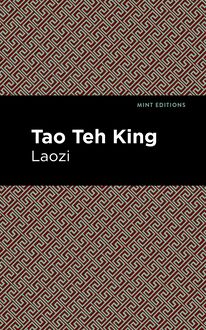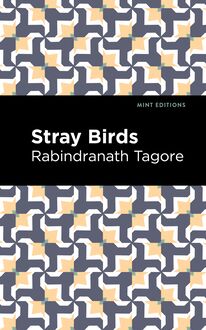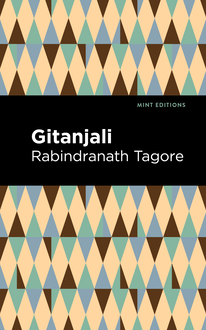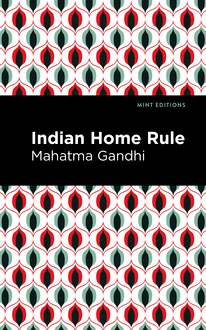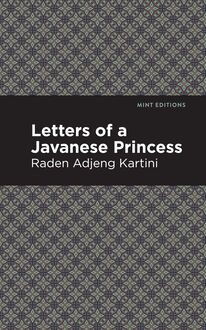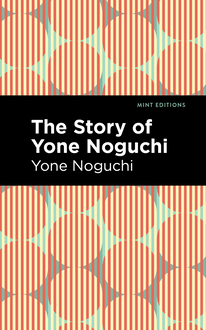-
 Univers
Univers
-
 Ebooks
Ebooks
-
 Livres audio
Livres audio
-
 Presse
Presse
-
 Podcasts
Podcasts
-
 BD
BD
-
 Documents
Documents
-
- Cours
- Révisions
- Ressources pédagogiques
- Sciences de l’éducation
- Manuels scolaires
- Langues
- Travaux de classe
- Annales de BEP
- Etudes supérieures
- Maternelle et primaire
- Fiches de lecture
- Orientation scolaire
- Méthodologie
- Corrigés de devoir
- Annales d’examens et concours
- Annales du bac
- Annales du brevet
- Rapports de stage
La lecture à portée de main
Vous pourrez modifier la taille du texte de cet ouvrage
Découvre YouScribe en t'inscrivant gratuitement
Je m'inscrisDécouvre YouScribe en t'inscrivant gratuitement
Je m'inscrisEn savoir plus
Vous pourrez modifier la taille du texte de cet ouvrage
En savoir plus

Description
A classic Hawaiian romance reimagined for modern readers.
Based on Hawaiian mythology, The Hawaiian Romance of Laieikawai (1863) by S.N. Hale‘ole accounts the story of young Laʻieikawai, the daughter of a powerful chief on Oahu. After Laʻieikawai’s life is threatened, she is forced to flee Oahu and take refuge in a secret cave under the water. Her grandmother takes her to the legendary paradise of Paliuli where she encounters romance, riches, and the supernatural, but also trials that test her character.
Hale‘ole’s story was the first work of literature published by a Native Hawaiian and serves as a moving representation of traditions passed down through generations.
Explore La’ieikawai’s story by adding this staple of Hawaiian literature to your library today.
Sujets
Informations
| Publié par | Mint Editions |
| Date de parution | 24 mars 2021 |
| Nombre de lectures | 0 |
| EAN13 | 9781513293585 |
| Langue | English |
| Poids de l'ouvrage | 4 Mo |
Informations légales : prix de location à la page 0,0500€. Cette information est donnée uniquement à titre indicatif conformément à la législation en vigueur.
Extrait
The Hawaiian Romance of Laieikawai
S. N. Hale‘ole
The Hawaiian Romance of Laieikawai was first published in 1918.
This edition published by Mint Editions 2021.
ISBN 9781513290737 | E-ISBN 9781513293585
Published by Mint Editions®
minteditionbooks.com
Publishing Director: Jennifer Newens
Design & Production: Rachel Lopez Metzger
Project Manager: Micaela Clark
Translated By: Martha W. Beckwith
Typesetting: Westchester Publishing Services
C ONTENTS P REFACE I NTRODUCTION I. T HE BOOK AND ITS WRITER II. N ATURE AND THE G ODS AS REFLECTED IN THE STORY 1. Polynesian origin of Hawaiian romance 2. Polynesian cosmogony 3. The demigod as hero 4. The earthly paradise; divinity in man and nature 5. The story: its mythical character 6. The story as a reflection of aristocratic social life III. T HE ART OF COMPOSITION 1. Aristocratic nature of Polynesian art 2. Nomenclature: its emotional value 3. Analogy: its pictorial quality 4. The double meaning; plays on words 5. Constructive elements of style IV. C ONCLUSIONS Persons in the story Action of the story Background of the story T EXT AND TRANSLATION F OREWORD I. T HE BIRTH OF THE P RINCESS 1 II. T HE FLIGHT TO P ALIULI III. K AUAKAHIALII MEETS THE P RINCESS IV. A IWOHIKUPUA GOES TO WOO THE P RINCESS V. T HE BOXING MATCH WITH C OLD - NOSE VI. T HE HOUSE THATCHED WITH BIRD FEATHERS VII. T HE W OMAN OF THE M OUNTAIN VIII. T HE REFUSAL OF THE P RINCESS IX. A IWOHIKUPUA DESERTS HIS SISTERS X. T HE SISTERS ’ SONGS XI. A BANDONED IN THE FOREST XII. A DOPTION BY THE P RINCESS XIII. H AUAILIKI GOES SURF RIDING XIV. T HE STUBBORNNESS OF L AIEIKAWAI XV. A IWOHIKUPUA MEETS THE GUARDIANS OF P ALIULI XVI. T HE G REAT L IZARD OF P ALIULI XVII. T HE BATTLE BETWEEN THE D OG AND THE L IZARD XVIII. A IWOHIKUPUA ’ S MARRIAGE WITH THE W OMAN OF THE M OUNTAIN XIX. T HE RIVALRY OF H INA AND P OLIAHU XX. A SUITOR IS FOUND FOR THE P RINCESS XXI. T HE R ASCAL OF P UNA WINS THE P RINCESS XXII. W AKA ’ S REVENGE XXIII. T HE P UNA R ASCAL DESERTS THE P RINCESS XXIV. T HE MARRIAGE OF THE CHIEFS XXV. T HE S EER FINDS THE P RINCESS XXVI. T HE P ROPHET OF G OD XXVII. A JOURNEY TO THE H EAVENS XXVIII. T HE E YEBALL - OF - THE -S UN XXIX. T HE WARNING OF VENGEANCE XXX. T HE COMING OF THE B ELOVED XXXI. T HE B ELOVED FALLS INTO SIN XXXII. T HE T WIN S ISTER XXXIII. T HE W OMAN OF H ANA XXXIV. T HE W OMAN OF THE T WILIGHT N OTES ON THE TEXT A PPENDIX : A BSTRACTS FROM H AWAIIAN STORIES I. S ONG OF C REATION , AS TRANSLATED BY L ILIUOKALANI II. C HANTS RELATING TO THE ORIGIN OF THE GROUP III. H AWAIIAN FOLK TALES , ROMANCES , OR MOOLELO T HE O RIGINAL H AWAIIAN T EXT
1 The titles of chapters are added for convenience in reference and are not found in the text.
P REFACE
T his work of translation has been undertaken out of love for the land of Hawaii and for the Hawaiian people. To all those who have generously aided to further the study I wish to express my grateful thanks. I am indebted to the curator and trustees of the Bishop Museum for so kindly placing at my disposal the valuable manuscripts in the museum collection, and to Dr. Brigham, Mr. Stokes, and other members of the museum staff for their help and suggestions, as well as to those scholars of Hawaiian who have patiently answered my questions or lent me valuable material—to Mr. Henry Parker, Mr. Thomas Thrum, Mr. William Rowell, Miss Laura Green, Mr. Stephen Desha, Judge Hazelden of Waiohinu, Mr. Curtis Iaukea, Mr. Edward Lilikalani, and Mrs. Emma Nawahi. Especially am I indebted to Mr. Joseph Emerson, not only for the generous gift of his time but for free access to his entire collection of manuscript notes. My thanks are also due to the hosts and hostesses through whose courtesy I was able to study in the field, and to Miss Ethel Damon for her substantial aid in proof reading. Nor would I forget to record with grateful appreciation those Hawaiian interpreters whose skill and patience made possible the rendering into English of their native romance—Mrs. Pokini Robinson of Maui, Mr. and Mrs. Kamakaiwi of Pahoa, Hawaii, Mrs. Kama and Mrs. Sup é of Kalapana, and Mrs. Julia Bowers of Honolulu. I wish also to express my thanks to those scholars in this country who have kindly helped me with their criticism—to Dr. Ashley Thorndike, Dr. W.W. Lawrence, Dr. A.C.L. Brown, and Dr. A.A. Goldenweiser. I am indebted also to Dr. Roland Dixon for bibliographical notes. Above all, thanks are due to Dr. Franz Boas, without whose wise and helpful enthusiasm this study would never have been undertaken.
M ARTHA W ARREN B ECKWITH .
C OLUMBIA U NIVERSITY ,
October, 1917.
INTRODUCTION
I
T HE BOOK AND ITS WRITER ; S COPE OF THE P RESENT E DITION
T he Laieikawai is a Hawaiian romance which recounts the wooing of a native chiefess of high rank and her final deification among the gods. The story was handed down orally from ancient times in the form of a kaao , a narrative rehearsed in prose interspersed with song, in which form old tales are still recited by Hawaiian story-tellers. 1 It was put into writing by a native Hawaiian, Haleole by name, who hoped thus to awaken in his countrymen an interest in genuine native story-telling based upon the folklore of their race and preserving its ancient customs—already fast disappearing since Cook’s rediscovery of the group in 1778 opened the way to foreign influence—and by this means to inspire in them old ideals of racial glory. Haleole was born about the time of the death of Kam é ham é ha I, a year or two before the arrival of the first American missionaries and the establishment of the Protestant mission in Hawaii. In 1834 he entered the mission school at Lahainaluna, Maui, where his interest in the ancient history of his people was stimulated and trained under the teaching of Lorrin Andrews, compiler of the Hawaiian dictionary, published in 1865, and Sheldon Dibble, under whose direction David Malo prepared his collection of “Hawaiian Antiquities,” and whose History of the Sandwich Islands (1843) is an authentic source for the early history of the mission. Such early Hawaiian writers as Malo, Kamakau, and John Ii were among Haleole’s fellow students. After leaving school he became first a teacher, then an editor. In the early sixties he brought out the Laieikawai , first as a serial in the Hawaiian newspaper, the Kuokoa , then, in 1863, in book form. 2 Later, in 1885, two part-Hawaiian editors, Bolster and Meheula, revised and reprinted the story, this time in pamphlet form, together with several other romances culled from Hawaiian journals, as the initial volumes of a series of Hawaiian reprints, a venture which ended in financial failure. 3 The romance of Laieikawai therefore remains the sole piece of Hawaiian, imaginative writing to reach book form. Not only this, but it represents the single composition of a Polynesian mind working upon the material of an old legend and eager to create a genuine national literature. As such it claims a kind of classic interest.
The language, although retaining many old words unfamiliar to the Hawaiian of to-day, and proverbs and expressions whose meaning is now doubtful, is that employed since the time of the reduction of the speech to writing in 1820, and is easily read at the present day. Andrews incorporated the vocabulary of this romance into his dictionary, and in only a few cases is his interpretation to be questioned. The songs, though highly figurative, present few difficulties. So far as the meaning is concerned, therefore, the translation is sufficiently accurate. But as regards style the problem is much more difficult. To convey not only the meaning but exactly the Hawaiian way of seeing things, in such form as to get the spirit of the original, is hardly possible to our language. The brevity of primitive speech must be sacrificed, thus accentuating the tedious repetition of detail—a trait sufficiently characteristic of Hawaiian story-telling. Then, too, common words for which we have but one form, in the original employ a variety of synonyms. “Say” and “see” are conspicuous examples. Other words identical in form convey to the Polynesian mind a variety of ideas according to the connection in which they are used—a play upon words impossible to translate in a foreign idiom. Again, certain relations that the Polynesian conceives with exactness, like those of direction and the relation of the person addressed to the group referred to, are foreign to our own idiom; others, like that of time, which we have more fully developed, the Polynesian recognizes but feebly. In face of these difficulties the translator has reluctantly foregone any effort to heighten the charm of the strange tale by using a fictitious idiom or by condensing and invigorating its deliberation. Haleole wrote his tale painstakingly, at times dramatically, but for the most part concerned for its historic interest. We gather from his own statement and from the breaks in the story that his material may have been collected from different sources. It seems to have been common to incorporate a Laieikawai episode into the popular romances, and of these episodes Haleole may have availed himself. But we shall have something more to say of his sources later; with his particular style we are not concerned. The only reason for presenting the romance complete in all its original dullness and unmodified to foreign taste is with the definite object of showing as nearly as possible from the native angle the genuine Polynesian imagination at work upon its own material, reconstructing in this strange tale of the “Woman of the Twilight” its own objective world, the social interests which regulate its actions and desires, and by this means to portray the actual character of the Polynesian mind.
This exact thing has not before been done for Hawaiian story and I do not recall any considerable romance in a Polynesian tongue so rendered. 4 Admir
-
 Univers
Univers
-
 Ebooks
Ebooks
-
 Livres audio
Livres audio
-
 Presse
Presse
-
 Podcasts
Podcasts
-
 BD
BD
-
 Documents
Documents
-
Jeunesse
-
Littérature
-
Ressources professionnelles
-
Santé et bien-être
-
Savoirs
-
Education
-
Loisirs et hobbies
-
Art, musique et cinéma
-
Actualité et débat de société
-
Jeunesse
-
Littérature
-
Ressources professionnelles
-
Santé et bien-être
-
Savoirs
-
Education
-
Loisirs et hobbies
-
Art, musique et cinéma
-
Actualité et débat de société
-
Actualités
-
Lifestyle
-
Presse jeunesse
-
Presse professionnelle
-
Pratique
-
Presse sportive
-
Presse internationale
-
Culture & Médias
-
Action et Aventures
-
Science-fiction et Fantasy
-
Société
-
Jeunesse
-
Littérature
-
Ressources professionnelles
-
Santé et bien-être
-
Savoirs
-
Education
-
Loisirs et hobbies
-
Art, musique et cinéma
-
Actualité et débat de société
- Cours
- Révisions
- Ressources pédagogiques
- Sciences de l’éducation
- Manuels scolaires
- Langues
- Travaux de classe
- Annales de BEP
- Etudes supérieures
- Maternelle et primaire
- Fiches de lecture
- Orientation scolaire
- Méthodologie
- Corrigés de devoir
- Annales d’examens et concours
- Annales du bac
- Annales du brevet
- Rapports de stage

